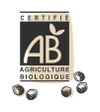Fungicides and insecticides for an organic vegetable garden
The association of the words "organic cultivation" and "treatments" may be surprising. However, some are authorized under certain conditions: they must be of natural origin, not be derived from synthetic chemistry, and be approved for the crop concerned. Be careful, although they are authorized and approved, these products remain materials to be used with caution and one may wonder if they really have a place in a private vegetable garden. If the economic survival of a market gardener depends among other things on the success of his crops, a gardener does not face the same constraints. Natural fungicides These are products intended to combat fungi. However, a healthy plant, in good growing conditions (food, exposure, aeration) has the means to prevent many attacks itself. These products are natural, but nevertheless have side effects and should only be used in exceptional circumstances. Copper It is often incorporated into the famous Bordeaux mixture and tints the foliage blue - when it is not the facades of houses adorned with trellises! It is mainly used against late blight of potatoes, tomatoes, and even onions. Copper is a heavy metal, persistent and toxic to earthworms and, in the medium term, sterilizing for the soil. It can also cause growth arrest in treated vegetables. However, there are milder forms of copper treatment commercially available, where the copper enriched with numerous trace elements is incorporated in the form of oxychloride and not sulfate. Sulfur In powder or wettable form, it is mainly used against scab of certain fruits and powdery mildew (white felting on the leaves) which can affect roses, vines, Cucurbitaceae, etc. Applied below 10°C, it is useless and above 28°C, it can cause burns. It is toxic to certain predatory bugs and, in high concentrations, to ladybugs. This list is not exhaustive and the description of these products may seem a little brutal as they seem to present more disadvantages than advantages. It is up to each gardener to test them and form their own opinion between the damage linked to pests and those "collateral", the solutions implemented to protect themselves from them. So what to do? The point is not to contemplate your devastated crops with a joyful air and proclaim "long live organic", but rather to always put into perspective the difficulty encountered and the solution adopted. Discover our natural products to fight against: Diseases Pests Natural insecticides As their name suggests, they are used against these awful little critters that seem to invade us every year for the simple pleasure of ruining our hopes of a harvest. There are three main organic insecticides, based on rotenone, pyrethrum and bacillus thuringiensis. Rotenone is currently questionable. Pyrethrins: Based on a plant of the chrysanthemum genus, they are effective against aphids, whiteflies, and flies. However, their action lasts only 48 hours. They act upon contact with insects and cause paralysis. Be careful, as this substance is not selective, any beneficial insects present will not resist it. Bacillus thuringiensis: This small bacterium is particularly effective - also upon contact - against caterpillars, especially white butterflies. But be careful, it is not selective either. Other insecticides: More difficult to obtain commercially, insecticides based on mineral oils or black soap act upon contact with insects. They destroy the waxy film that protects them or obstruct their respiratory organs. Be careful, all the unfortunate insects within range of the sprayer will eat indiscriminately! What is a systemic product? We often see this barbaric word, "systemic," on the packaging of treatment products, as opposed to "by contact." It means that it does not act by touching the organism concerned, but by ingestion. Treat a vegetable with a systemic insecticide in the case of aphids, for example; they are piercing-sucking insects and will die from ingestion of the poisonous sap.





